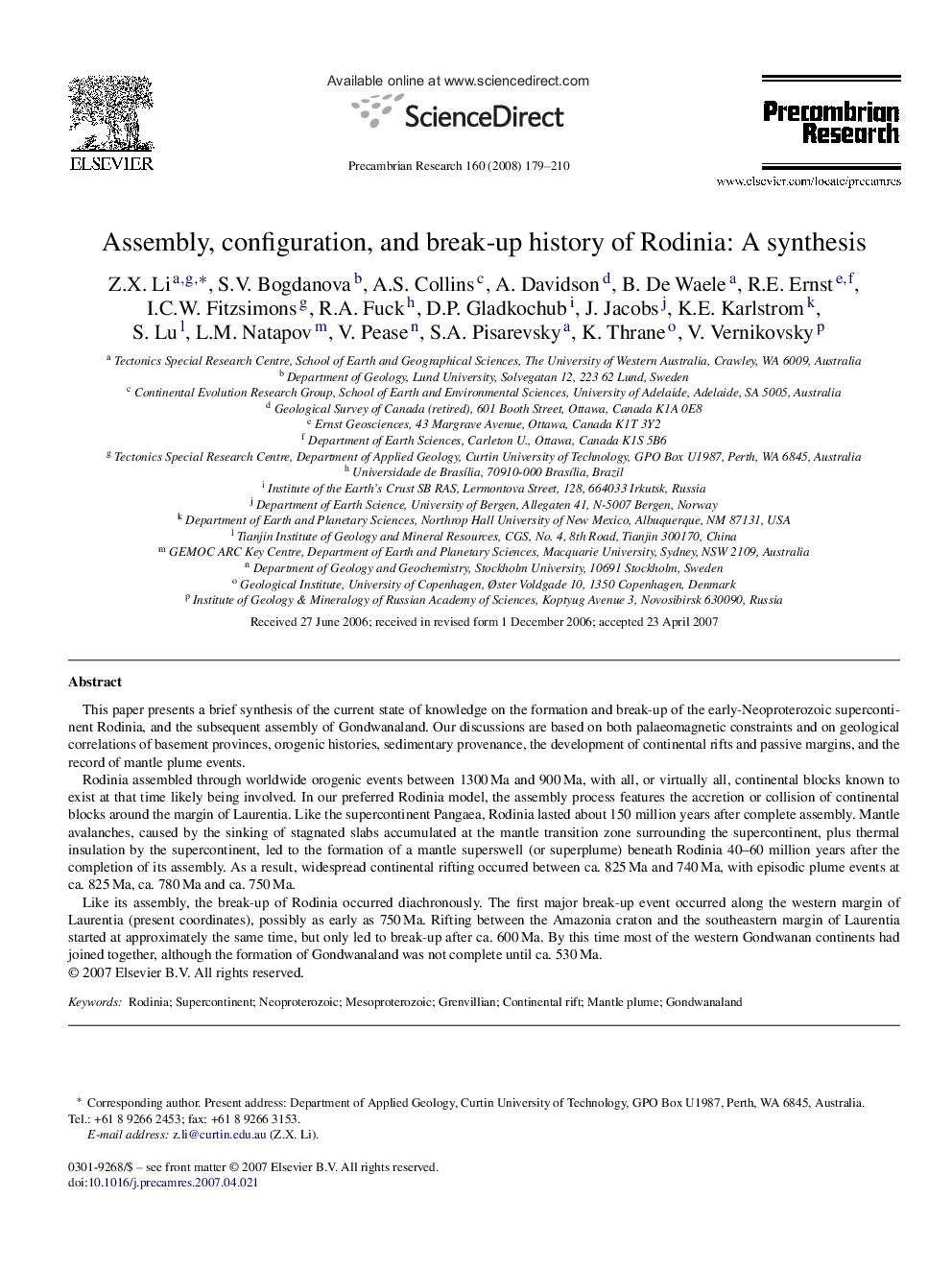| کد مقاله | کد نشریه | سال انتشار | مقاله انگلیسی | نسخه تمام متن |
|---|---|---|---|---|
| 4724505 | 1639710 | 2008 | 32 صفحه PDF | دانلود رایگان |

This paper presents a brief synthesis of the current state of knowledge on the formation and break-up of the early-Neoproterozoic supercontinent Rodinia, and the subsequent assembly of Gondwanaland. Our discussions are based on both palaeomagnetic constraints and on geological correlations of basement provinces, orogenic histories, sedimentary provenance, the development of continental rifts and passive margins, and the record of mantle plume events.Rodinia assembled through worldwide orogenic events between 1300 Ma and 900 Ma, with all, or virtually all, continental blocks known to exist at that time likely being involved. In our preferred Rodinia model, the assembly process features the accretion or collision of continental blocks around the margin of Laurentia. Like the supercontinent Pangaea, Rodinia lasted about 150 million years after complete assembly. Mantle avalanches, caused by the sinking of stagnated slabs accumulated at the mantle transition zone surrounding the supercontinent, plus thermal insulation by the supercontinent, led to the formation of a mantle superswell (or superplume) beneath Rodinia 40–60 million years after the completion of its assembly. As a result, widespread continental rifting occurred between ca. 825 Ma and 740 Ma, with episodic plume events at ca. 825 Ma, ca. 780 Ma and ca. 750 Ma.Like its assembly, the break-up of Rodinia occurred diachronously. The first major break-up event occurred along the western margin of Laurentia (present coordinates), possibly as early as 750 Ma. Rifting between the Amazonia craton and the southeastern margin of Laurentia started at approximately the same time, but only led to break-up after ca. 600 Ma. By this time most of the western Gondwanan continents had joined together, although the formation of Gondwanaland was not complete until ca. 530 Ma.
Journal: Precambrian Research - Volume 160, Issues 1–2, 5 January 2008, Pages 179–210